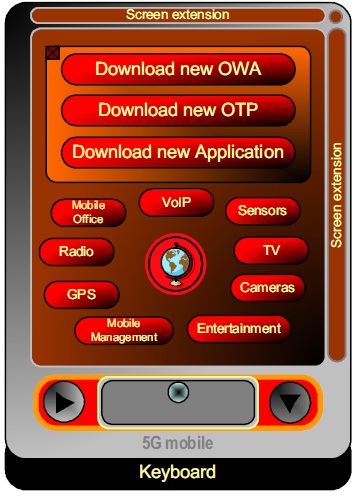5g Mobile Technology Pdf Free Download

Dec 17, 2012 - SEMINAR REPORT ON 5G WIRELESS TECHNOLOGY By Niki Upadhyay. Theultimate goal of 5G is to design a real wireless world, that is free. Is possible to be downloaded & installed which is based on Open Transport Protocol. Examples of 5G Technology Components. To provide a view of future IMT technology aspects 2015-2020 and beyond and to provide. 5G mobile & wireless.
5G may still be in its infancy, but it will have a far-reaching impact for both consumers and businesses. This ebook looks at the technical details and how 5G services are being developed and deployed. From the ebook: What is 5G? 5G refers to the fifth generation of mobile phone networks. Crazy chicken song download mp3. Since the introduction of the first standardized mobile phone network in 1982, succeeding standards have been adopted and deployed approximately every nine years.
GSM, the 2nd generation standard, was first deployed in 1992, while a variety of competing 3G standards began deployment in 2001. The popular 4G LTE standard was deployed by mobile network operators in 2010. Now, technology companies and mobile network operators are preparing their infrastructure and customers for the transition to 5G. Principally, 5G refers to “5G NR (New Radio),” which is the standard adopted by 3GPP, an international cooperative responsible for the development of the 3G UMTS and 4G LTE standards. Other 5G technologies do exist. Verizon’s 5G TF network operates on 28 and 39 GHz frequencies and is used only for fixed wireless internet service, not in smartphones.

Verizon’s 5G TF deployments will be transitioned to 5G NR in the future. Additionally, 5G SIG was used by KT for a demonstration deployment during the 2018 Winter Olympics in Pyeongchang. 5G NR allows for networks to operate on a wide variety of frequencies, most notably recycling the frequencies vacated by decommissioning previous wireless communications networks. The 2G DCS frequency bands, the 3G E-GSM and PCS frequency bands, and the digital dividend of spectrum vacated by the transition to digital TV broadcasts are some of the bands available for use in 5G NR. 5G standards divide frequencies into two groups: FR1 (450 MHz - 6 GHz) and FR2 (24 GHz - 52 GHz). Most early deployments will be in the FR1 space. Research is ongoing into using FR2 frequencies, which are also known as extremely high frequency (EHF) or millimeter wave (mmWave) frequencies.
Discussions of the suitability of millimeter wave frequencies have been published in IEEE journals as far back as 2013.
Fundamentals of 5G Mobile Networks provides an overview of the key features of the 5th Generation (5G) mobile networks, discussing the motivation for 5G and the main challenges in developing this new technology. This book provides an insight into the key areas of research that will define this new system technology paving the path towards future research and development. The book is multi-disciplinary in nature, and aims to cover a whole host of intertwined subjects that will predominantly influence the 5G landscape, including the future Internet, cloud computing, small cells and self-organizing networks (SONs), cooperative communications, dynamic spectrum management and cognitive radio, Broadcast-Broadband convergence, 5G security challenge, and green RF. This book aims to be the first of its kind towards painting a holistic perspective on 5G Mobile, allowing 5G stakeholders to capture key technology trends on different layering domains and to identify potential inter-disciplinary design aspects that need to be solved in order to deliver a 5G Mobile system that operates seamlessly.